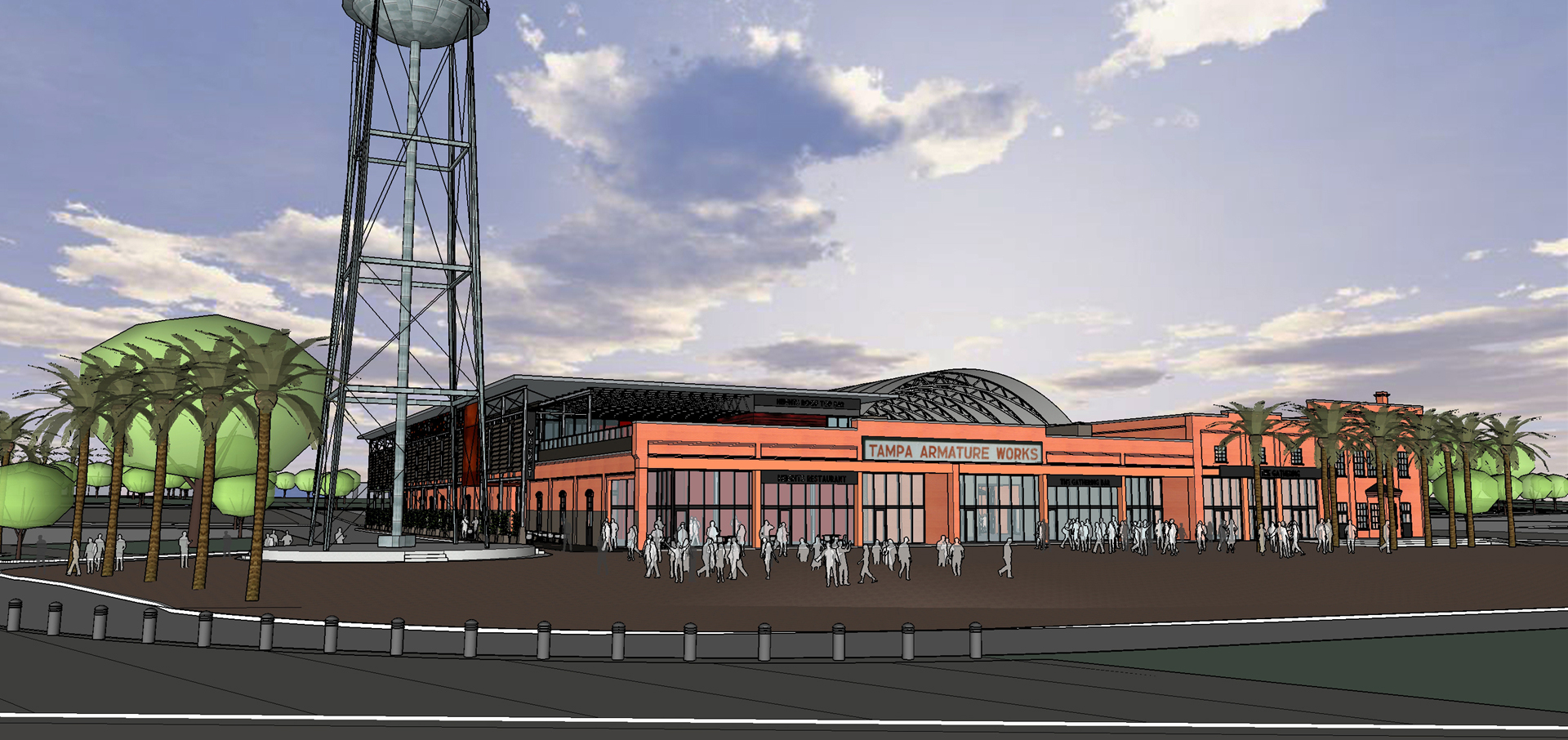By Kevin Brass
August 24, 2015
In Tampa, developer SoHo Capital has included a 12,000-square-foot (1,115 sq m) food hall as part of the Heights, a 43-acre (17 ha) mixed-use project that includes apartments, offices, restaurants, and expansion of the Tampa Riverwalk boardwalk.
The market, dubbed the Heights Market Hall and Gathering, is intended to “create a place with heart and soul which dovetails with the established neighborhoods,” says SoHo principal Adam Harden. He says he hopes the market will engage people living in the area. “We are surrounded by six old, established neighborhoods without a place to buy fresh food,” he notes.
The market, which is in the final stages of the approval process, would occupy part of the renovated Armature Works, a 68,000-square-foot (6,300 sq m) warehouse once used as storage for streetcars. “We considered retail for this space but felt it would not activate this portion of the building and complement the gathering spaces in the same way the market will,” Harden says. The market will include a demonstration kitchen—a licensed facility available to all the vendors for use during events.
SoHo researched a wide array of markets around the United States, but eventually focused its attention on smaller markets that Harden says are “capitalized and constructed under more current circumstances,” and which provided better financial case studies. The developers also found a wealth of data on lease and license agreements, and vendor metrics, from the publicly operated markets around the country.
SoHo’s research found that focusing on restaurant stalls is not always the best plan. “The best markets reward and encourage local production,” Harden says. “We believe that the long-term economics will be best if we are able to strike a balance between fresh local food and value-add prepared food and products.”
Full Article: http://urbanland.uli.org/economy-markets-trends/food-markets-nourishing-development/
